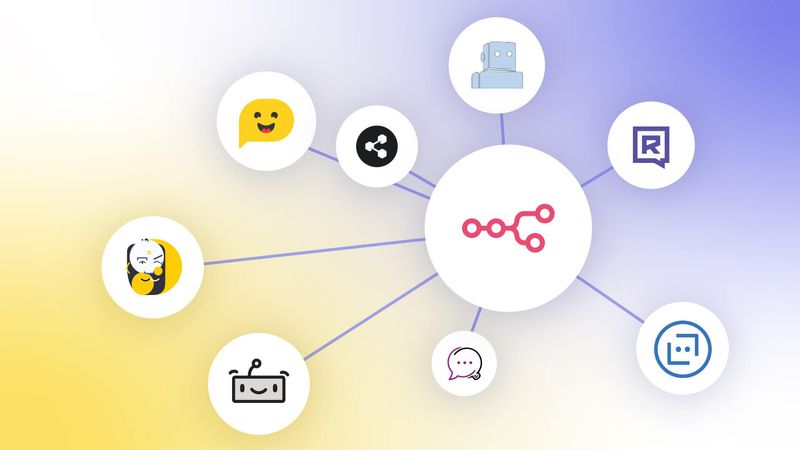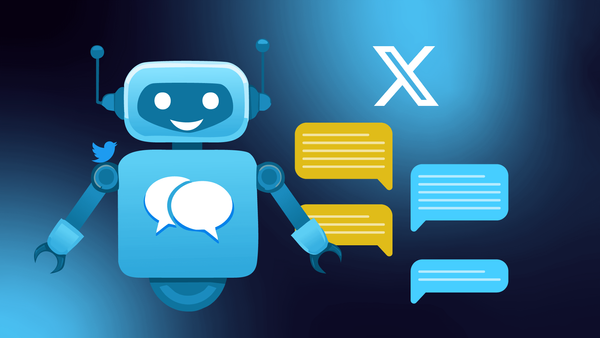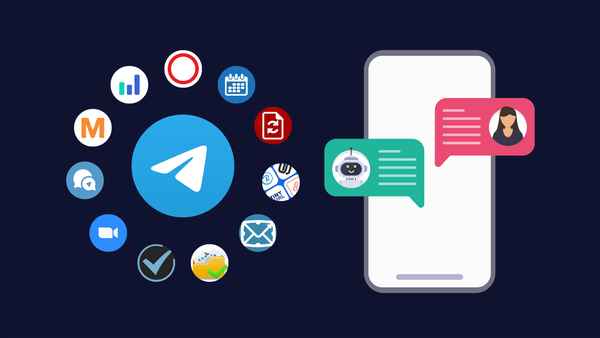Did you know that chatbots have been existing for about 60 years now? In the modern era, they are much more useful and powerful and even mission-critical for companies’ survival.
In this article, we’ll focus on 8 open-source chatbot tools and platforms that are able to provide great user experience and save resources.
Why the emphasis on open-source chatbots?
Despite the overflow of commercial chatbot builders, open-source platforms still offer distinct benefits to companies, NGOs, and even governments:
- Full control over data, eliminating the risk of vendor lock-in
- Transparency concerning underlying technologies, facilitating better development and debugging process
- Greater customization and extendability – a service that commercial vendors would charge a hefty premium for, if not supported by their paid platforms
- As for pricing, open-source chatbots aren't necessarily cheaper, especially with the high engineering skills required for a set-up. However, when dealing with deep customization, integration with existing platforms, or large user bases, self-hosted chatbots can offer significant cost savings.
We’ll also briefly introduce you to n8n – an extendable source-available workflow automation tool. n8n will let you create more complex chatbot behaviour and integrate chatbots between each other or with other services, without fighting APIs.
8 best open-source chatbots
You’ll find an overview of the following open-source chatbot software platforms in this article:
- Botpress: a visual, no-code solution for chat flows
- Microsoft Bot Framework: ideal for complex bots within the Microsoft ecosystem
- Rasa: Python-based custom corporate chatbots
- Tock: perfect for embedded devices with or without an Internet connection
- Wit.ai: a chatbot builder designed for Facebook Messenger
- BotMan: PHP-based chatbots
- DeepPavlov: an AI framework for sophisticated chatbots and virtual assistants
- HuggingChat: open-source GPT-based models
Botpress
Best for: building visual no-code chat flows
Star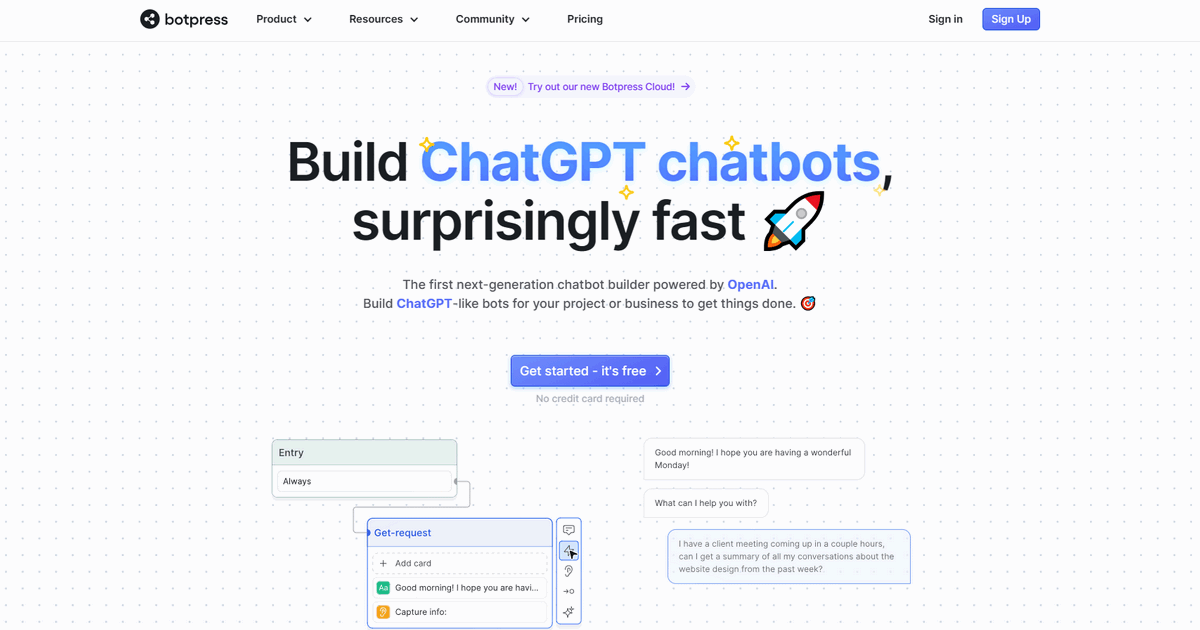
Overview: Botpress is a leading chatbot development platform suitable for making tailored open-source chatbots for free. These bots are able to deal with various functions such as customer support, sales, and marketing.
The platform allows developers to customize chatbots as per their business requirements. Botpress leverages natural language processing (NLP) to understand and interpret human language, providing a more human-like interaction. It comes with an intuitive visual flow builder that enables users to design conversation flows, manage content, and implement user interfaces.
Key features:
- Visual flow builder: Botpress boasts a drag-and-drop functionality, making chatbot dialogue design and implementation a breeze;
- NLP engine: With its built-in language understanding, Botpress can effortlessly comprehend user intent and provide contextually relevant responses. Developers might require additional configuration based on the bot's use-case;
- Omnichannel: Botpress enables chatbot deployment across multiple channels such as websites, Facebook Messenger, and Slack, ensuring a robust and uniform experience across platforms;
- Integrations: It provides easy integration with existing databases, CRM systems, and other business applications. This is particularly beneficial if there are pre-existing workflows in n8n that can be triggered from Botpress.
Microsoft Bot Framework
Best for: building complex bots within the Microsoft ecosystem
Star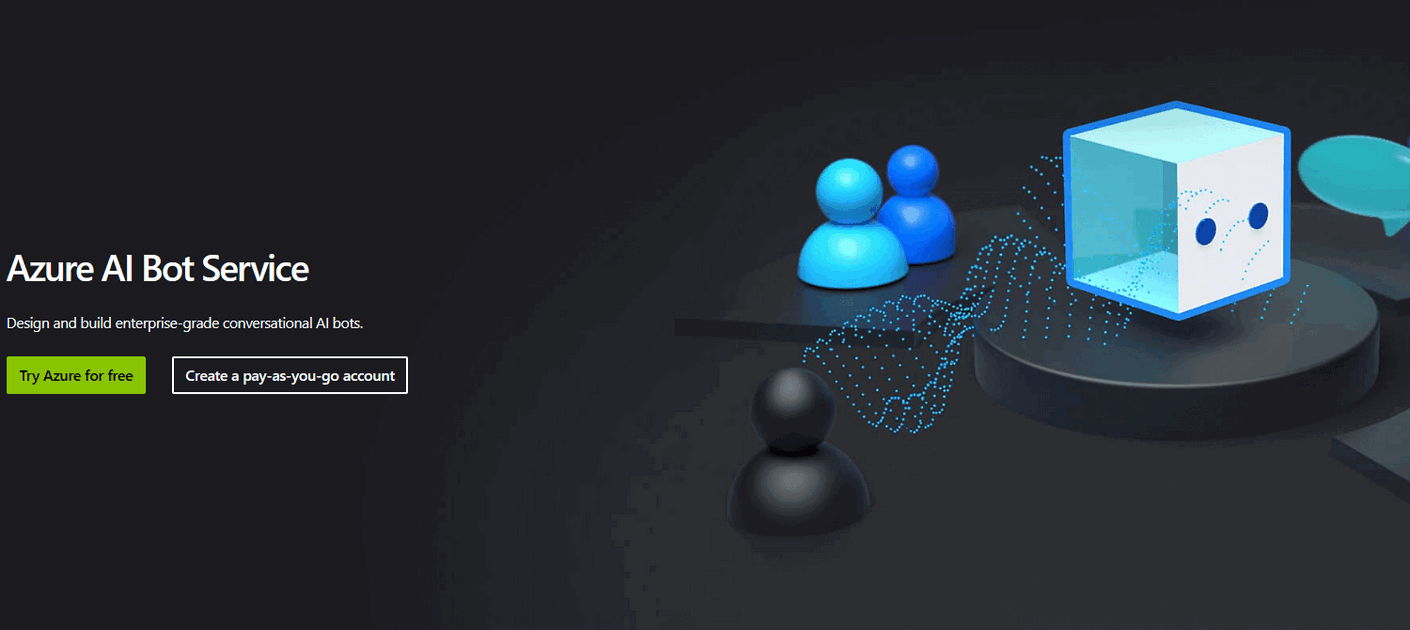
Overview: Microsoft Bot Framework (MFB) is a comprehensive offering that is used to construct, test, deploy, and manage intelligent bots that can interact naturally with users across a multitude of platforms.
This chatbot builder offers an SDK for programmers and Bot Framework Composer – a visual canvas for less tech-savvy citizen developers. MFB is tightly integrated with other Microsoft services, which is a kind of double-sided sword. Even though MBF is an open-source project, some key components are still close-sourced, check the details below.
Key features:
- MFB enables the creation of bots that can seamlessly interact with users across numerous platforms, including websites, apps, Microsoft Teams, Skype, Slack, and Facebook Messenger. If you need more flexibility, custom HTTP requests are supported;
- Language Understanding Intelligent Service (LUIS): This proprietary feature allows bots to understand user language contextually and respond appropriately, making interactions more human-like;
- Integration with Azure Cognitive Services: this allows bots to understand and interpret user inputs such as images and voice. Note that Cognitive Services is a paid offering from Microsoft;
- Direct Line REST API: This robust API facilitates the creation of custom communication channels between your bot and your application.
Rasa
Best for: making custom corporate chatbots with Python
Star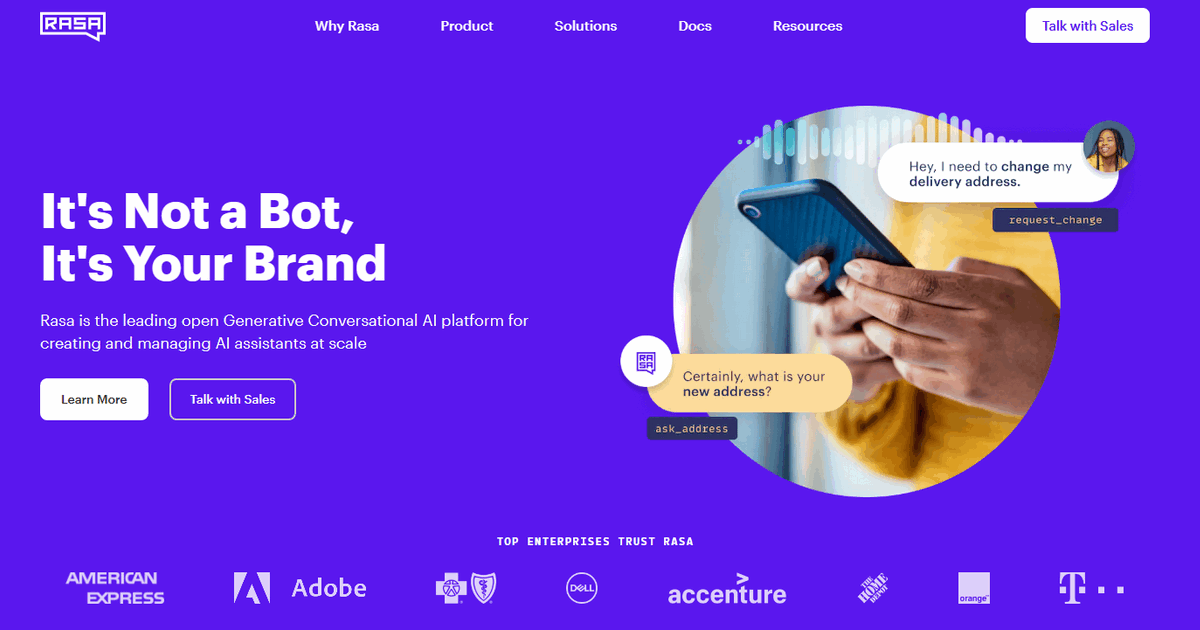
Overview: Rasa is an open-source machine learning framework for building AI-powered chatbots and voice apps. It’s widely known for its ability to build robust, context-based conversational experiences.
Rasa doesn’t use a strict rule-based chat flow but instead utilizes Natural Language Understanding (NLU) and Machine Learning (ML) to understand and respond to user inputs, enabling it to engage in more complex and human-like conversations.
Key features:
- Developer-oriented platform: settings are provided via yml config files, and custom code can be written in Python;
- Easy model training: after providing examples for NLU, the bot logic can be easily (re)trained and deployed as a single file;
- Multiple connectors for using Rasa with other platforms, be it your own website or several popular messengers;
- Rasa X - a visual low-code dashboard is only available as a part of the enterprise plan.
Tock
Best for: creating chatbots for IoT
Star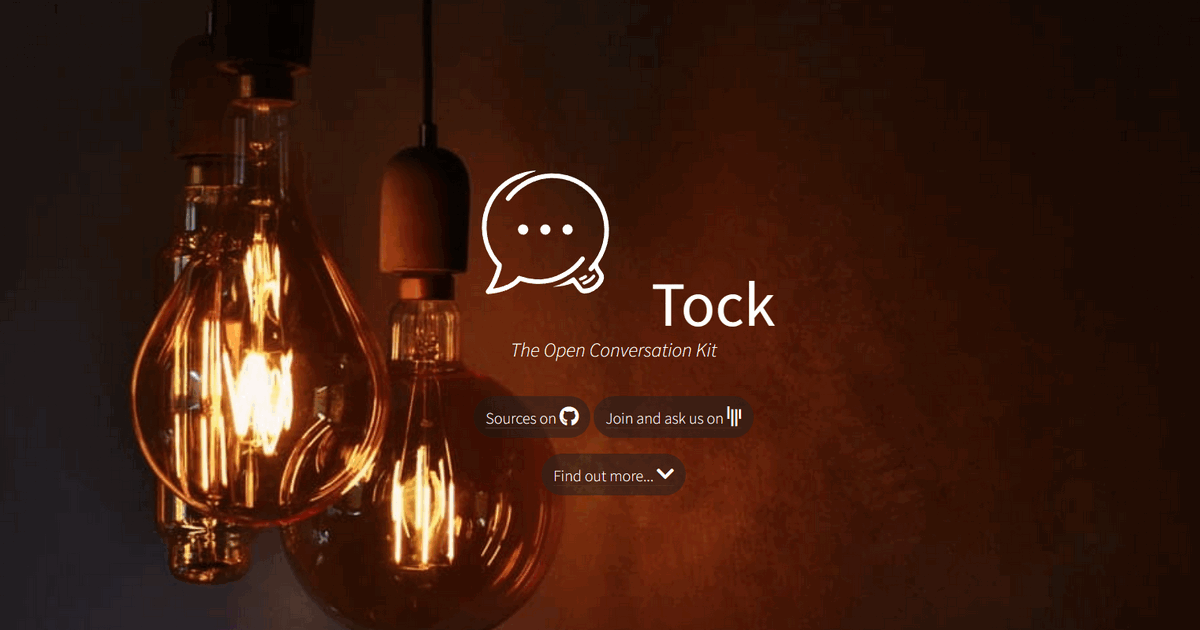
Overview: Tock (The Open Conversation Kit) is probably less known then Rasa, however, it shares certain similarities with the previous chatbot builder. It’s a fully open-source conversational AI platform that allows building complete solutions and doesn`t depend on 3rd-party APIs. Even more, open-source bots created with Tock can work completely standalone, making this solution perfect for embedded systems.
Key features:
- Tock Studio: a visual editor for building, testing and monitoring NLP models;
- Conversational DSL for Kotlin, Nodejs, Python and REST API allow developers to create chat flows in several languages;
- Built-in connectors for several text/voice channels: Facebook Messenger, WhatsApp, Google Assistant, Alexa, Twitter and more;
- Finally, chatbots are deployed conveniently via Docker.
Wit.ai
Best for: building chatbots for Facebook
Star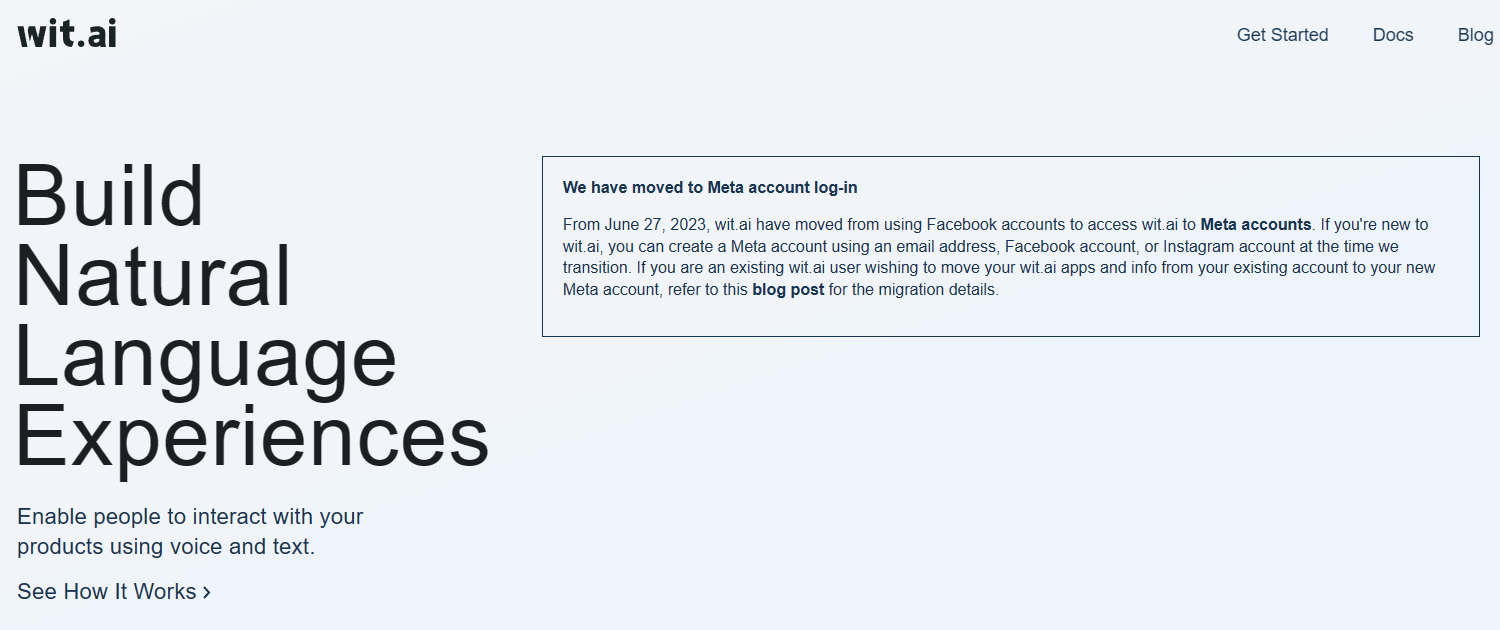
Overview: If your primary focus is on Facebook, then check out Wit.ai. It’s a chatbot-building platform that allows developers to create conversational interfaces for various applications such as messaging platforms and voice assistants.
The platform uses natural language processing (NLP) and machine learning algorithms to understand and respond to user inputs, making it easy for businesses to automate customer interactions and improve their overall customer experience. Even though Wit.ai is an open-source project, important key components such as the NLU engine run only in the cloud.
Key features:
- Composer – a visual editor that helps create chat flows in a low-code manner;
- Wit.ai handles model training, so chatbot developers need to provide examples and create a list of intents and replies;
- SDK is provided for several languages, such as Node.js, Python, Go, Ruby and Unity.
BotMan
Best for: creating chatbots in PHP
Star
Overview: BotMan is a handy open-source PHP library that simplifies chatbot creation. It’s completely developer-oriented and requires programming skills. Unlike other platforms written in JS and several other languages, BotMan is a great utility for programmers that are still supporting PHP projects.
Key features:
- Framework agnostic: this means BotMan supports any PHP framework;
- Supports multiple messaging platforms, including Slack, Telegram, HipChat, Facebook Messenger, WeChat, as well as any other app via an API driver;
- NLU functionality is not shipped together with BotMan. This means that intent detection should be done via other providers, such as Rasa NLU. ChatGPT can be also configured for this task.
DeepPavlov
Best for: creating complex virtual assistants
Star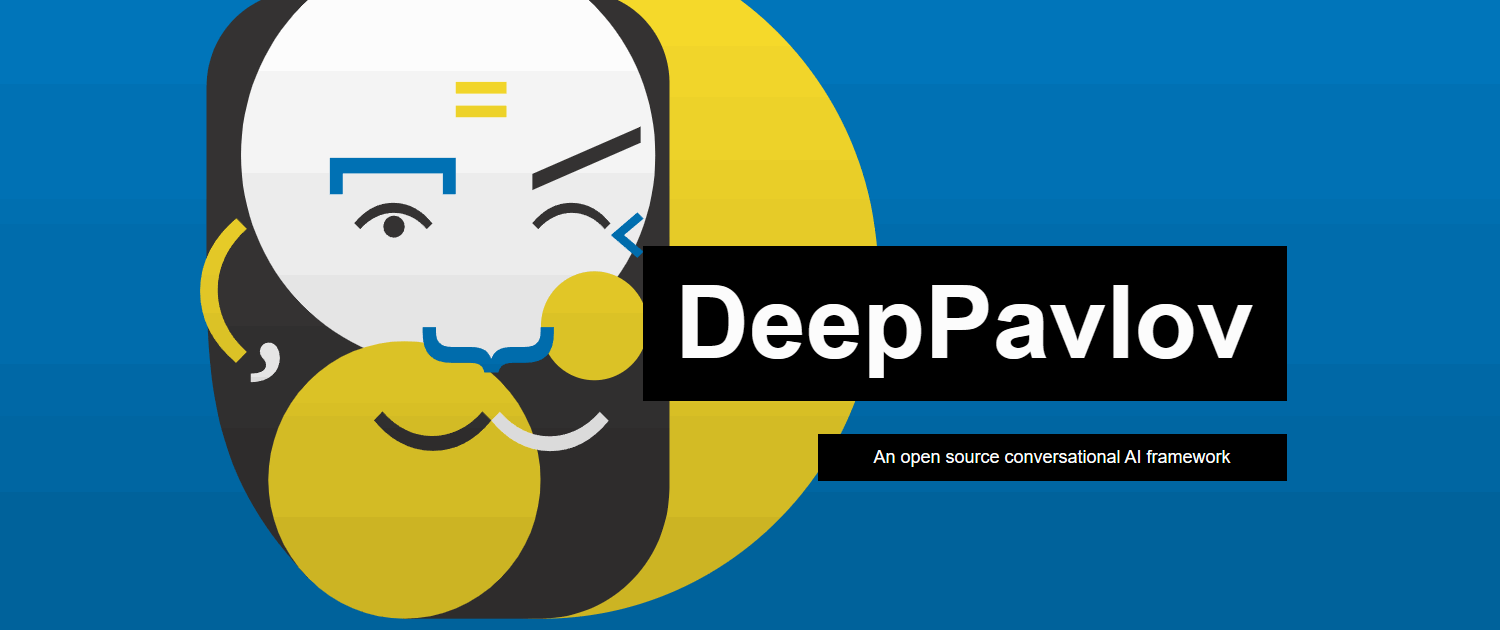
Overview: DeepPavlov is an open-source library for deep learning end-to-end dialog systems, chatbots and virtual assistants. In today’s list of chatbot platforms it's the most advanced project that emerged long before ChatGPT. DeepPavlov allows developers to build, test and deploy top-notched chatbots. This platform, however, requires significant skills in programming and ML.
Key features:
- Pre-trained models: DeepPavlov provides a range of pre-trained models that developers can use as building blocks for their conversational AI systems;
- Advanced NLP tools: It offers sophisticated natural language processing (NLP) tools for tasks such as named entity recognition, sentiment analysis, and intent recognition;
- Resource-intensive: Training advanced models can be resource-intensive and may require high-performance hardware.
HuggingChat
Best for: testing chatbots on the open-source Llama2 model
Star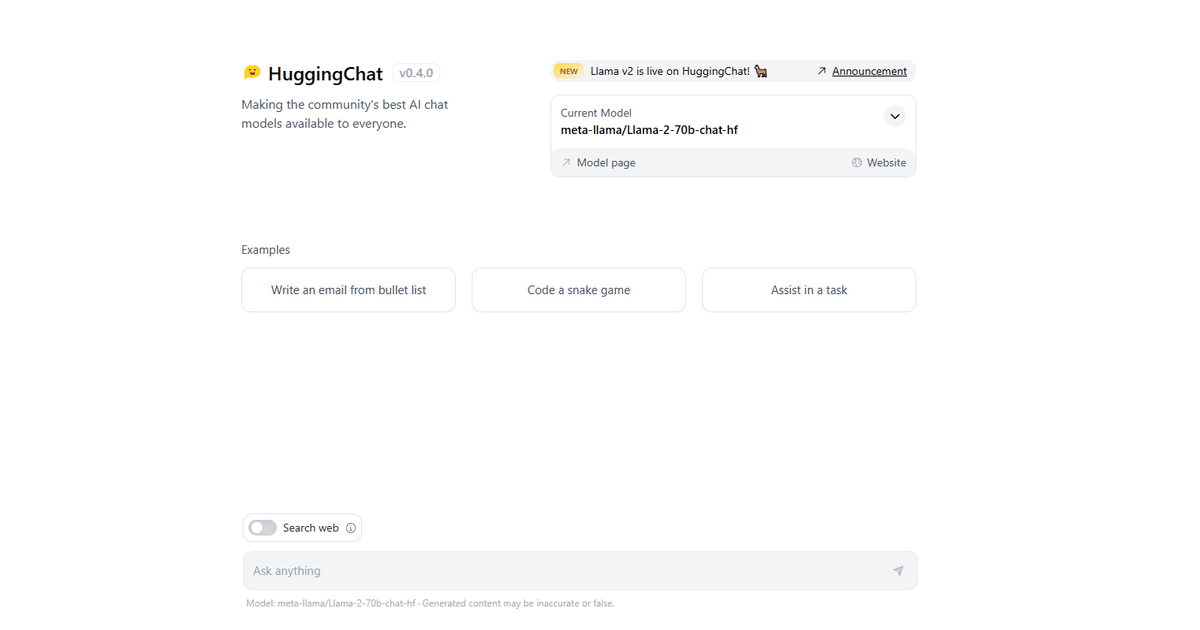
Overview: HuggingChat really stands out from the crowd. If you’ve read this article attentively, you’ve probably noticed that many chatbot platforms use various NLU models that were developed before the era of ChatGPT.
These relatively “old” approaches are more difficult to configure and implement, they also produce less wow effect on end-users compared to ChatGPT. Since GPT 3.5 and GPT 4 models are proprietary, it’s impressive that HuggingChat offers a free chatbot platform based on the open-source Llama2 model.
Key features:
- Llama2 model is a potent ChatGPT alternative comparable to GPT-3.5;
- At the moment HuggingChat comes as a web-interface bot, but with an unofficial HuggingChat API it can be used for building chatbots. This gives a great opportunity to test the open-source LLMs before creating complete self-hosted AI chatbots.
What to look for in an open-source chatbot
Now you have the selection of 8 open-source chatbots in front of you. To decide which one to pick, remember to check these chatbots for:
Rule-Based Bots
Open-source platforms often shine when it comes to crafting straightforward rule-based bots. Given that these bots are deployed on your own infrastructure, it becomes easier to access internal data for customer experience personalization. This means the chatbot has the potential to not only provide product-related information but also process and modify orders. Remember, this is achieved with zero AI involvement!
NLP and NLU Capabilities
For more complex projects, many open-source chatbots provide Natural Language Processing (NLP) and Natural Language Understanding (NLU) features. These machine-learning solutions, which were prevalent before the ChatGPT epoch, do require additional tuning during deployment and possibly further training, making them more suitable for large-scale projects.
ChatGPT-based AI
The rise of ChatGPT has ushered in the next generation of chatbots capable of simulating human-like conversation more accurately and understanding user intent without the need for extensive training. The catch with GPT-based AI chatbots is their reliance on cloud-based providers such as the OpenAI GPT API and Claude service among others.
Cloud (in)dependency
The dependency on cloud providers for GPT Large Language Models (LLMs) is currently decreasing as more LLMs are being open-sourced. Armed with sufficient knowledge and appropriate hardware, companies can now create fully independent open-source chatbots boasting state-of-the-art capabilities.
To sum up, the open-source chatbot you choose must align with your project's complexity, have the necessary AI features (if needed), and should ideally be independent or have minimal dependency on cloud providers.
Build your own chatbot with n8n
While all the above-mentioned open-source chatbots are great assets, sometimes you might hit the ceiling of wanting to integrate them with your business ecosystem, connect to the legacy software or simply want to build custom functionality.
Here is where n8n comes in!
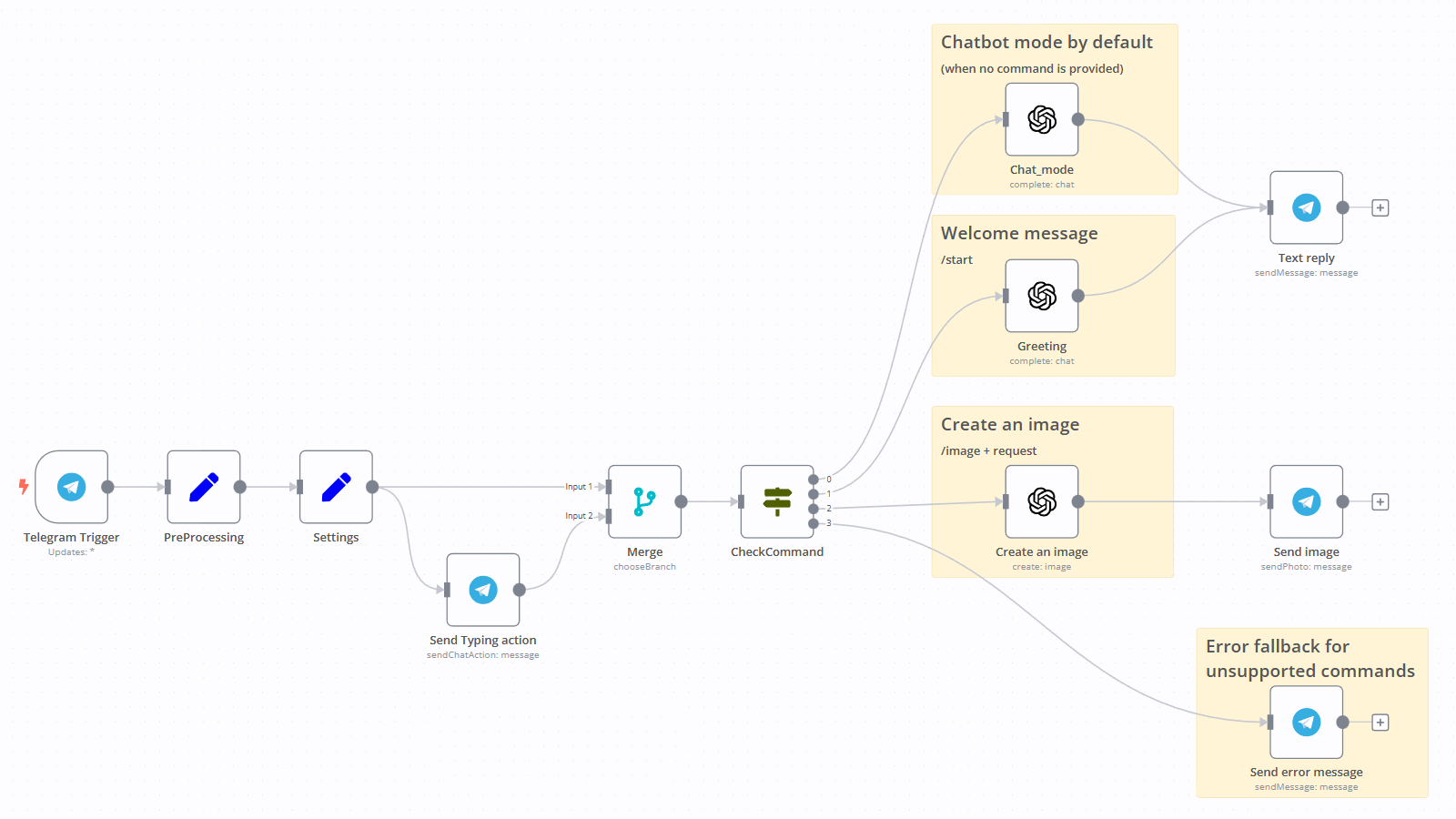
First of all, rule-based chatbots can be easily created completely from scratch for many existing platforms such as Telegram, Viber, Whatsapp, etc. More complex chatbot behaviour can be achieved thanks to the OpenAI node.
Next, being open and highly expandable, n8n is especially strong for heavy lifting on the back-end side.
This means that n8n can supplement other chatbot platforms and perform complex or non-standard actions. For instance, if you use a different platform with an attractive web-based chat for your site, you can leverage n8n to integrate all other channels. This approach centralizes your bot logic for all customer channels. n8n can connect to existing NLU engines (such as Rasa NLU) and communicate with chatbot API via the HTTP Request node.
Besides, you can create multilingual chatbots with n8n. They are able to support as many languages as needed within a single workflow. If you utilize Telegram, the user interface language is automatically recognized – a boon for businesses catering to multiple geographical regions.
Finally, n8n has a rich set of enterprise features allowing your team, including both developers and tech-savvy users, to collaborate on a single platform.
Wrap up
In this article, you've gained insight into 8 powerful open-source chatbot platforms:
- Some platforms provide user-friendly interfaces for non-developers (such as Botpress or Microsoft Bot Framework), whereas others are designed only with developers in mind (DeepPavlov and BotMan);
- There is a variety of approaches to natural language processing and understanding. Most platforms have machine-learning NLU modules included (with Rasa providing the most popular open-source NLU engine). However, newer Large Language Models are also available in HuggingChat, and GPT-based models are easily connected to Botpress;
- Finally, some projects are completely open-source (Tock, DeepPavlov, BotMan) whereas others have proprietary components (MBF, Wit.ai, HuggingChat).
While it's relatively straightforward to create a simple self-hosted chatbot, crafting a bot with advanced capabilities demands more time, effort, and computational power.
With n8n building complex bots becomes much more accessible. User interface and pre-built components empower developers of making chatbots. As an open and extendable tool, n8n allows making complex AI assistants, because all custom actions can be created via either standard Nodes or with the JS and Python code.
What’s next?
Now that you're armed with this knowledge, it's time to put it into action. Dive into chatbot creation using n8n today, and start integrating external platforms!
With n8n's cloud version, you get a hassle-free account with fair pricing and can start automating right away.
If you need more advanced team and security features, take a look at our enterprise plans. Roll out an enterprise version of n8n on-premise for ultimate control over the platform.
You can also deploy n8n on your own server for free.
We strongly encourage you to join our community forum and share your experiences on chatbot development!

